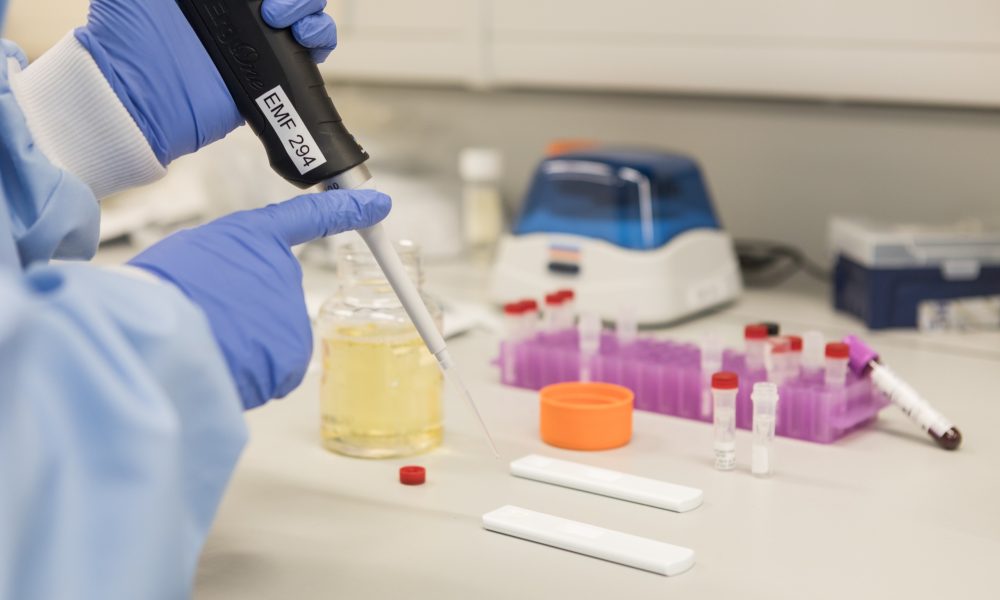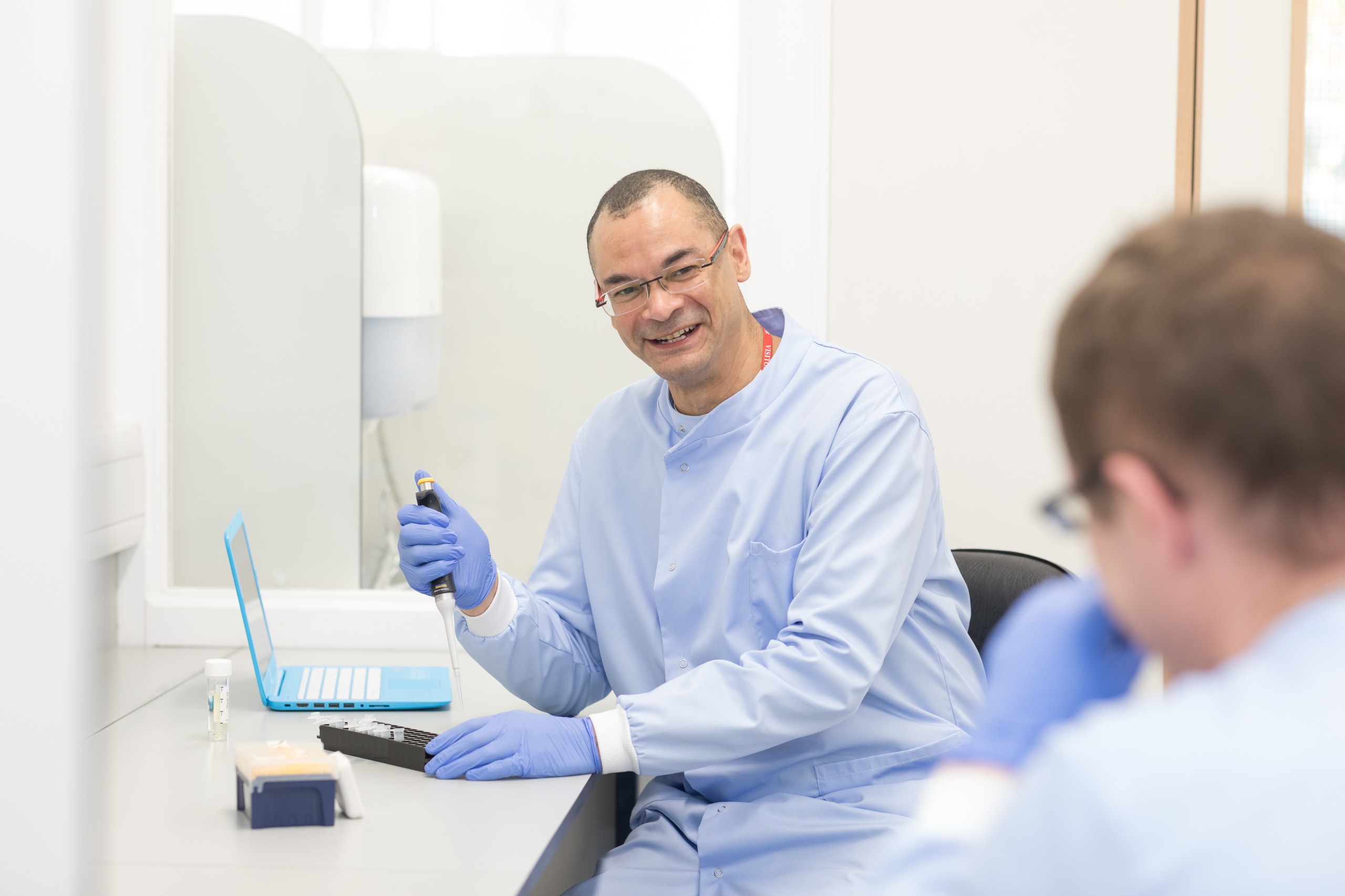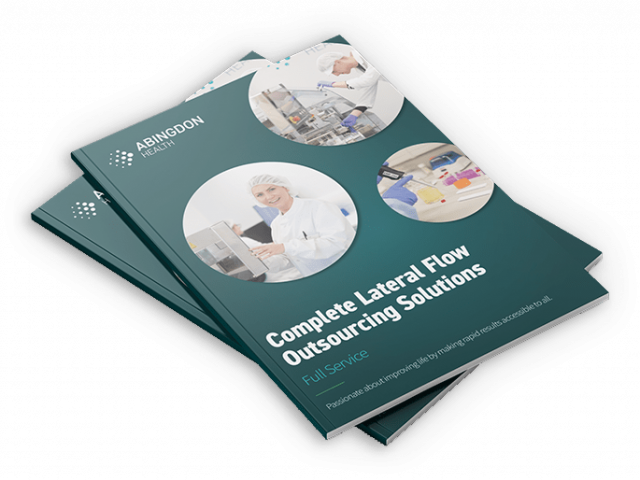Navigating Design Verification in Lateral Flow Development

Ensuring Precision from Concept to Creation
User Requirements: The Genesis of Design Inputs
Design Verification: Bridging Inputs and Outputs
In-Process Assurance: Building the LFA Right
Verification and Validation: A Complementary Partnership
Key Takeaways
In this blog Abingdon Health’s Chief Operating Officer, Dr. Mark Jones, outlines the importance of design verification in bridging the gap between user needs and product reality.
In the realm of lateral flow test (LFT) development, the success of a product is intricately tied to the robustness of its design verification process. The journey begins with the gathering of user requirements; a crucial step that lays the foundation for the entire development cycle.
This article delves into the significance of design verification, its role in translating user needs into tangible design outputs, and the importance of early planning for a successful lateral flow assay (LFA) development project’s Verification and Validation (V&V) process.
Abingdon Health’s team has over 20 years’ experience in the lateral flow market and is a knowledge leader in the development, scale-up, transfer, manufacturing and regulatory approval of lateral flow products across a range of sectors. If you would like to understand more about the development, technical transfer, manufacturing and regulatory process and discuss any specific requirements don’t hesitate to contact Abingdon’s highly experienced team.
User Requirements: The Genesis of Design Inputs
At the inception of any lateral flow development project, user requirements serve as the guiding stars. These requirements encapsulate the needs and expectations of end-users, acting as the criteria for subsequent design decisions. The transition from user requirements to documented design inputs marks the initial bridge between the conceptualisation and tangible development phases.
Design Verification: Bridging Inputs and Outputs
Design verification is the linchpin that ensures the fidelity of the development process. Its primary purpose is to validate that the design outputs (prototypes; early-stage LFAs) align with the pre-defined design inputs. In essence, it is the process of proving that the product being developed is on the right trajectory and is meeting the stipulated requirements, ensuring every component – nitrocellulose membrane to the buffer composition and everything in between – plays its part perfectly.

In-Process Assurance: Building the LFA Right
Unlike traditional testing methodologies that occur post-development, design verification is an ongoing process integrated into the development cycle rather than a one-time event. This proactive approach allows for early identification and rectification of deviations, fostering a more agile and efficient development process whilst ultimately aligning any changes and improvements with the initial blueprint. In the lateral flow test development environment this is critical to success of any project.
Design verification, at its core, is about building the product to the right requirements. It serves as a meticulous quality control mechanism, ensuring that every facet of the product aligns with the pre-defined design requirements. This step is instrumental in preventing costly re-work and mitigating risks associated with design flaws. It is not uncommon to see projects looking to move into the next phase fail because of a lack of design verification process adherence, or even the absence of one completely.
Verification and Validation: A Complementary Partnership
While design verification focuses on translating functional requirements into functioning design specifications, it is crucial to note its limitations. This process does not assess the finished product against user needs or evaluate its performance in real-world scenarios. These aspects fall under the purview of design validation, also referred to as performance validation, a complementary but distinct phase in the development life cycle.
Another way to explain this is design verification ensures you build the right product; design validation focuses on precision and ensuring you built the product right.
Success in design verification hinges on early and strategic planning of the V&V process. By outlining how and when verification and validation activities will take place, development teams can anticipate challenges, allocate resources efficiently, and ensure that the entire process unfolds seamlessly.
Key Takeaways:
In the intricate landscape of lateral flow development, design verification emerges as a critical pillar in the journey from concept to creation.
- Design verification is the bridge between user needs and product reality.
- It verifies that design outputs meet design inputs throughout development.
- It ensures you build the right LFA, not just any LFA.
By meticulously aligning design outputs with user-driven inputs, adopting an in-process assurance approach, and embracing early planning for the V&V process, we can navigate the complexities of design verification and pave the way for the precise creation of robust, user-centric products.
Top Tip: plan your V&V process early for a smooth and successful journey.
As lateral flow technologies continue to evolve, the emphasis on a rigorous and agile design verification process remains paramount for success in this dynamic field.
Abingdon Health understands the importance, and ensure integration of, the design verification process to guide you through your LFA project, drawing on decades of experience. With Abingdon Health’s design verification as your compass, your LFA journey will be one of confident creation, leading to a product that fulfils both your vision and the needs of your users. Alongside design verification as a quality assurance function, Abingdon’s regulatory assurance team has extensive experience working closely with operational and development teams to precisely carry out performance evaluation studies, as part of the design validation stage.
Abingdon is ISO 9001 and ISO 13485 certified and adheres to Good Manufacturing Practice (GMP). This framework ensures that developed tests are manufactured in a consistent and robust manner batch in, batch out. Contact the Abingdon team to see how we can help take your test from R&D into reliable manufacture and commercial success. Also, discuss our value-added services such as regulatory and commercial support that provides a de-risked and streamlined route to market.

